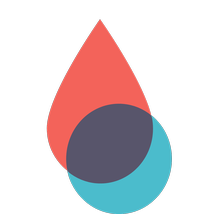Cardiovascular disorders biological samples & experimental services
What are cardiovascular disorders?
Cardiovascular disorders refer to a wide range of medical conditions that affect the heart and blood vessels. They can cause a variety of symptoms, including chest pain, shortness of breath, heart palpitations, and weakness or numbness in the limbs. Some of the most common types of cardiovascular disorders include coronary artery disease, heart failure, arrhythmia, stroke, hypertension, or aortic aneurysm.
Cardiovascular diseases are a major area of research, with many ongoing studies aimed at improving our understanding of these conditions and developing new treatments and preventative strategies. Researchers are working to develop new treatments using precision medicine that are tailored to the specific genetic and molecular characteristics of each patient's disease. Advances in imaging technology and other diagnostic techniques are enabling doctors to diagnose and monitor cardiovascular diseases with less invasive procedures.
What types of samples are used in cardiovascular research?
There are a variety of different types of samples that are used in cardiovascular research, depending on the specific research question and study design. Some common types of samples include:
Blood samples
Blood samples are commonly used in cardiovascular research to measure levels of various biological markers, such as cholesterol, glucose, and hormones. They can also be used to study genetic markers, such as mutations and variants, that may be associated with cardiovascular disease.
Tissue samples
Tissue samples, such as heart tissue or blood vessel samples, can be obtained from animal models or from human patients undergoing surgery or biopsy. These samples can be used to study the cellular and molecular changes that occur in the heart and blood vessels in response to disease or injury.
Imaging data
Imaging data, such as X-rays, CT scans, and MRI scans, can provide valuable information about the structure and function of the heart and blood vessels. This information can be used to study the progression of cardiovascular disease, and to develop new diagnostic and therapeutic strategies.
Clinical data
Clinical data, such as patient medical records and demographic information, can be used to study the relationship between various risk factors, such as age, gender, and lifestyle factors, and the development of cardiovascular disease.
Saliva samples
Saliva samples can be used to study genetic changes associated with blood disorders.
These are just a few examples of the types of samples that are commonly used in cardiovascular research. The specific type of sample that is used will depend on the research question and the study design, and may involve multiple types of samples to provide a more complete understanding of the disease.

Available types of cardiovascular diseases biological samples
- Tissues
- Fresh tissues
- Frozen tissues (OCT and FF)
- FFPE tissues
- Healthy tissues
- Blood derivatives
- Whole blood
- PBMC
- Plasma
- Serum
- Leukapheresis
- Biofluids
- Urine
- Stool/Feces
- Saliva
- Mucosal swabs
- Data and Imaging
Types of Collections
- Retrospective: we can look into existing biobank collections
- Prospective: we can set up clinical collection specific to a given project
Experimental models used in heart and vascular disorder R&D
There are several experimental models used in cardiovascular disorder research and development, including:
Cell culture models: In vitro models, such as cell lines derived from human or animal tissues, can be used to study the behavior of individual cells in the laboratory. This can provide important information about the cellular and molecular changes that occur in response to disease or injury and can be used to test new drugs or therapies.
Animal models: In vivo models, such as mice, rats, and rabbits, are widely used in cardiovascular research to study the underlying mechanisms of disease and to evaluate new treatments. These models can be genetically manipulated to mimic human disease, or they can be induced to develop cardiovascular disease through diet, physical activity, or other interventions.
Organoids: Organoids are three-dimensional structures that can be grown in the laboratory to resemble functional organs. These can be used to study the behavior of cells in a more complex and realistic environment and can provide valuable information about how cells interact and communicate with each other in the heart and blood vessels.
Computer models: In silico models, such as mathematical models and simulation tools, can be used to study the behavior of the heart and blood vessels in response to various factors, such as blood flow, pressure, and electrical activity. These models can help to predict the impact of new treatments or risk factors and can be used to develop new diagnostic and therapeutic strategies.
Each of these experimental models has its own strengths and limitations, and researchers often use a combination of models to gain a more comprehensive understanding of cardiovascular disorders. The choice of model will depend on the research question, the available resources, and the ethical and regulatory considerations.

Typical deliverables
- Feasibility of availability of samples or experimental services
- Regulatory aspects (transfer authorizations, export authorizations, ethics committee agreement)
- Contracting
- Samples shipment in appropriate conditions
- Clinical data or results
- Other services (i.e. Nucleic acid extraction, quality control)

Get started with your cardiovascular diseases research request
Please answer the fields below to be contacted by our team of scientists
Our team will handle your cardiovascular disorders R&D outsourcing from the beginning to the end
Perform a feasibility study by looking for existing samples already in collections & ready to be transferred
Set up a clinical biological collection and preparing contracts with sources
Assist the material transfer from the source to the lab, including treatments, QA or shipping, as needed
Some examples of cardiovascular disorders and the incidence of the diseases
The incidence of CVDs varies between countries and regions and is influenced by factors such as age, gender, lifestyle, and genetic factors. In general, CVDs are more common in developed countries, where factors such as sedentary lifestyles, unhealthy diets, and high levels of stress contribute to the development of the disease. In developing countries, the burden of CVDs is increasing, due in part to the increasing prevalence of risk factors such as tobacco use, unhealthy diets, and physical inactivity.
Heart failure: a condition in which the heart can't pump enough blood to meet the body's needs.
Arrhythmia: a condition in which the heart beats with an irregular or abnormal rhythm.
Stroke: a condition in which blood flow to the brain is disrupted, causing brain damage and potentially leading to disability or death.
Hypertension (high blood pressure): a condition in which the blood pressure in the arteries is consistently elevated.
Aortic aneurysm: a condition in which the wall of the aorta, the largest artery in the body, weakens and bulges, creating the risk of rupture.
Peripheral artery disease: a condition in which the arteries in the legs and feet become narrow, reducing blood flow to the extremities.